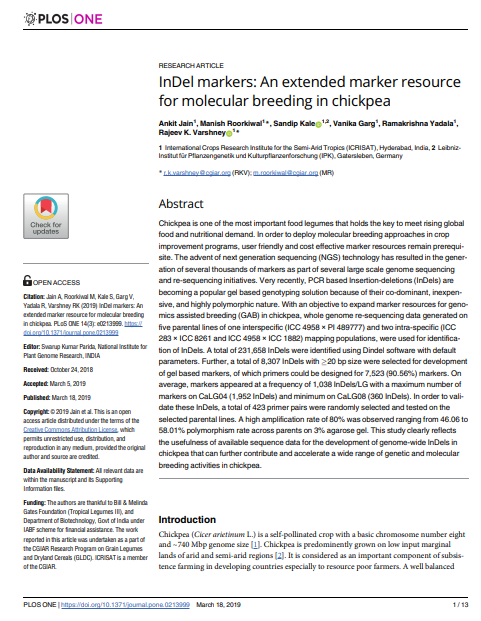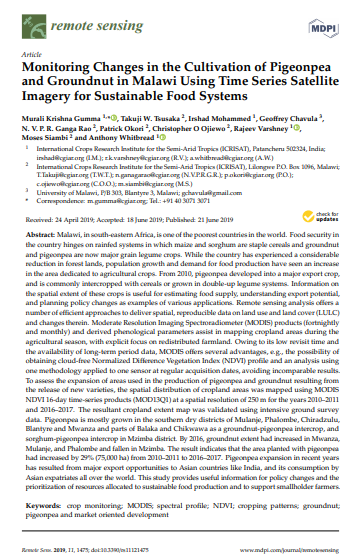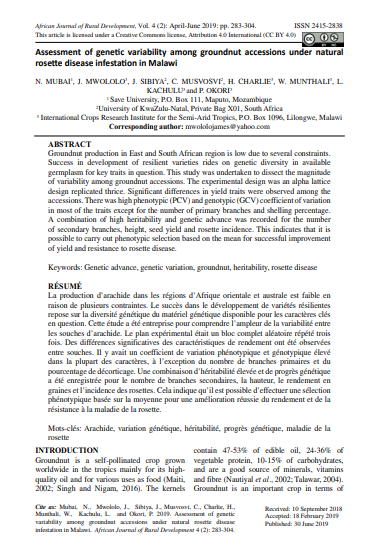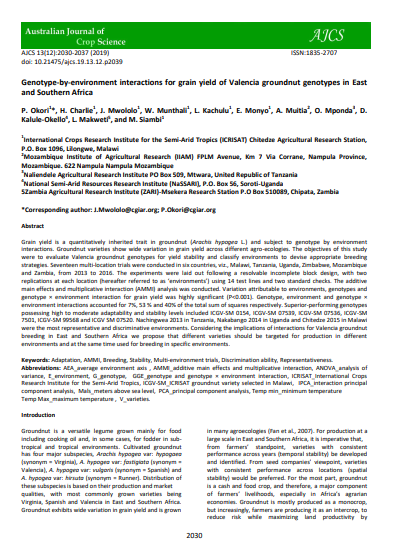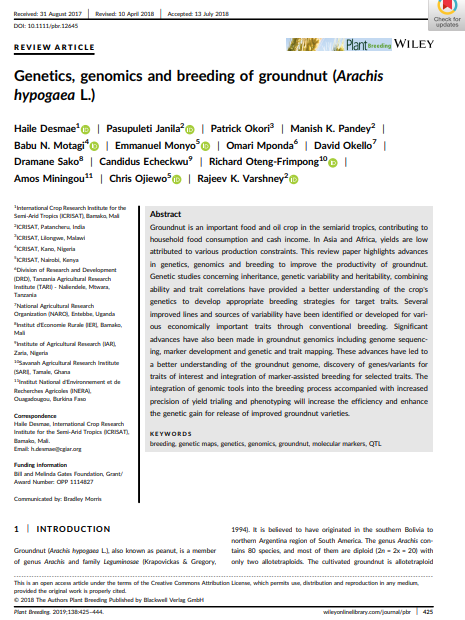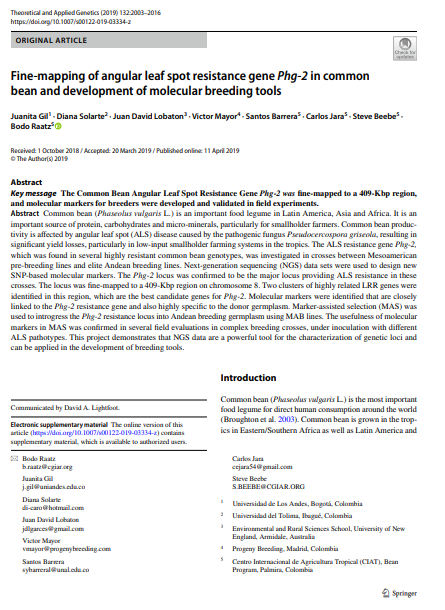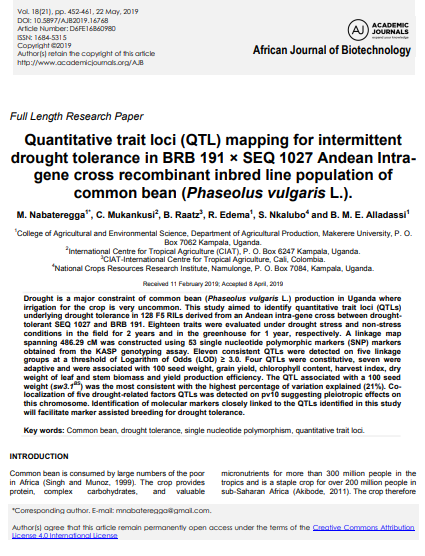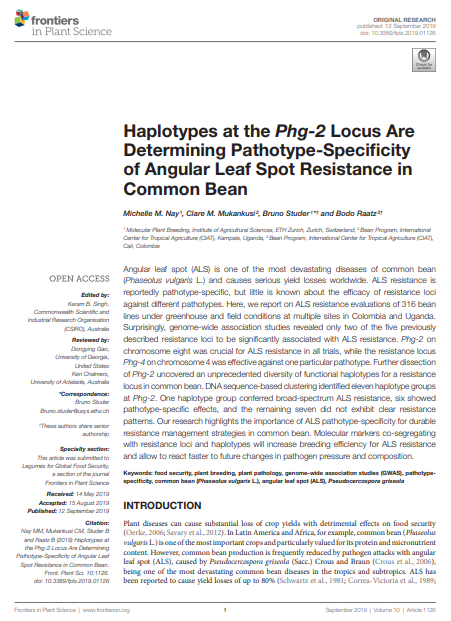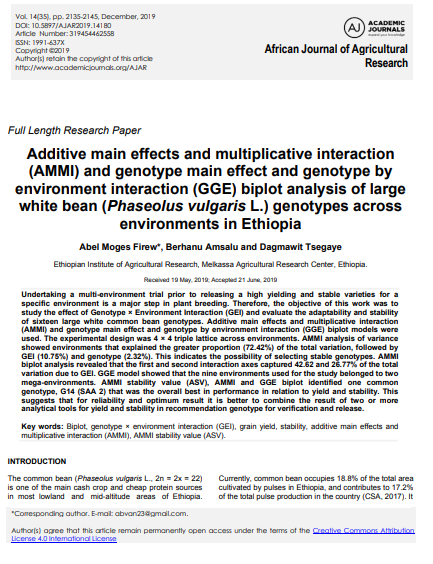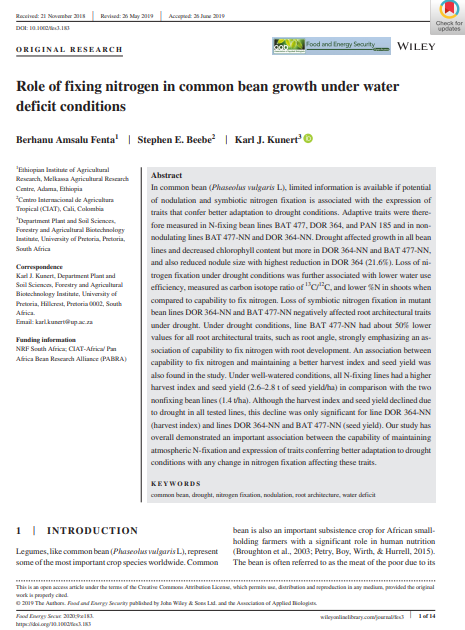InDel markers: An extended marker resource for molecular breeding in chickpea
Chickpea is one of the most important food legumes that holds the key to meet rising global food and nutritional demand. In order to deploy molecular breeding approaches in crop improvement programs, user friendly and cost effective marker resources remain prerequisite. This study aims to expand marker resources for genomics assisted breeding (GAB) in chickpea.
Project: TLIII
File type: PDF (1.06 MB)
Monitoring changes in the cultivation of pigeonpea and groundnut in Malawi using time series satellite imagery for sustainable food systems
To assess the expansion of areas used in the production of pigeonpea and groundnut resulting from the release of new varieties in Malawi, this article discusses how the spatial distribution of cropland areas was mapped using MODIS NDVI 16-day time-series products (MOD13Q1) at a spatial resolution of 250 m for the years 2010–2011 and 2016–2017.
Project: TLIII
File type: PDF
Assessment of genetic variability among groundnut accessions under natural rosette disease infestation in Malawi
Groundnut production in East and South Africa is low due to several constraints. Success in the development of resilient varieties rides on genetic diversity in available germplasm for key traits in question. This study was undertaken to dissect the magnitude of variability among groundnut accessions.
Project: TLIII
File type: PDF (483.05 KB)
Genotype-by-environment interactions for grain yield of Valencia groundnut genotypes in East and Southern Africa
The objectives of this study were to evaluate Valencia groundnut genotypes for yield stability and classify environments to devise appropriate breeding strategies. Seventeen multi-location trials were conducted in six countries, viz., Malawi, Tanzania, Uganda, Zimbabwe, Mozambique and Zambia, from 2013 to 2016.
Project: TLIII
File type: PDF (899.46 KB)
Genetics, genomics and breeding of groundnut (Arachis hypogaea L.)
This review paper highlights advances in genetics, genomics, and breeding to improve the productivity of groundnut in Asia and Africa.
Project: TLIII
File type: PDF (561.50 KB)
Fine-mapping of angular leaf spot resistance gene Phg-2 in common bean and development of molecular breeding tools
This study used next-generation sequencing datasets to design new SNP-based molecular markers to identify angular leaf spot (ALS) resistance in common bean.
Project: TLIII
File type: PDF (1.27 MB)
Quantitative trait loci (QTL) mapping for intermittent drought tolerance in BRB 191 × SEQ 1027 Andean Intragene cross recombinant inbred line population of common bean (Phaseolus vulgaris L.)
This article presents the results of a study to identify quantitative trait loci (QTLs) underlying drought tolerance in common bean.
Project: TLIII
File type: PDF (606.75 KB)
Haplotypes at the Phg-2 Locus Are Determining Pathotype-Specificity of Angular Leaf Spot Resistance in Common Bean
This article reports on ALS resistance evaluations of 316 bean lines under greenhouse and field conditions at multiple sites in Colombia and Uganda.
Project: TLIII
File type: PDF (2.20 MB)
Additive main effects and multiplicative interaction (AMMI) and genotype main effect and genotype by environment interaction (GGE) biplot analysis of large white bean (Phaseolus vulgaris L.) genotypes across environments in Ethiopia
This article presents the results of a study on the effect of Genotype × Environment Interaction (GEI) and evaluates the adaptability and stability of 16 large white common bean genotypes.
Project: TLIII
File type: PDF (668.17 KB)
Role of fixing nitrogen in common bean growth under water deficit conditions
This article describes a study that measured adaptive traits in N‐fixing bean lines and non-nodulating lines to explore the association of nodulation and symbiotic nitrogen fixation with the expression of traits that confer better adaptation to drought conditions.
Project: TLIII
File type: PDF (988.15 KB)


